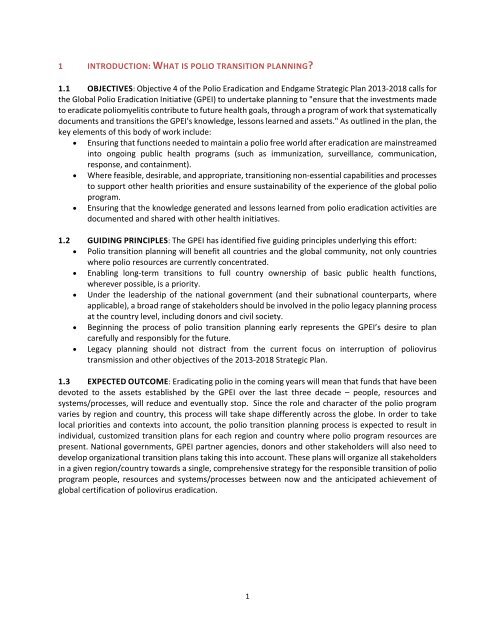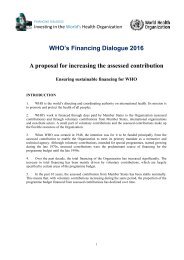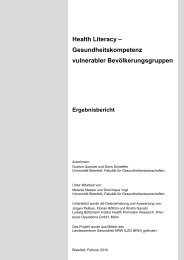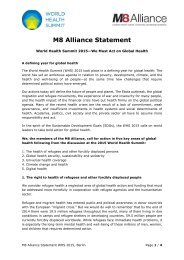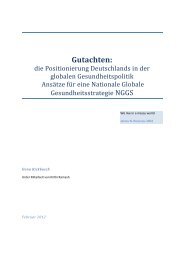POLIO PLANNING
TransitionGuidelinesForPolioLegacy
TransitionGuidelinesForPolioLegacy
You also want an ePaper? Increase the reach of your titles
YUMPU automatically turns print PDFs into web optimized ePapers that Google loves.
1 INTRODUCTION: WHAT IS <strong>POLIO</strong> TRANSITION <strong>PLANNING</strong>?<br />
1.1 OBJECTIVES: Objective 4 of the Polio Eradication and Endgame Strategic Plan 2013-2018 calls for<br />
the Global Polio Eradication Initiative (GPEI) to undertake planning to "ensure that the investments made<br />
to eradicate poliomyelitis contribute to future health goals, through a program of work that systematically<br />
documents and transitions the GPEI's knowledge, lessons learned and assets." As outlined in the plan, the<br />
key elements of this body of work include:<br />
• Ensuring that functions needed to maintain a polio free world after eradication are mainstreamed<br />
into ongoing public health programs (such as immunization, surveillance, communication,<br />
response, and containment).<br />
• Where feasible, desirable, and appropriate, transitioning non-essential capabilities and processes<br />
to support other health priorities and ensure sustainability of the experience of the global polio<br />
program.<br />
• Ensuring that the knowledge generated and lessons learned from polio eradication activities are<br />
documented and shared with other health initiatives.<br />
1.2 GUIDING PRINCIPLES: The GPEI has identified five guiding principles underlying this effort:<br />
• Polio transition planning will benefit all countries and the global community, not only countries<br />
where polio resources are currently concentrated.<br />
• Enabling long-term transitions to full country ownership of basic public health functions,<br />
wherever possible, is a priority.<br />
• Under the leadership of the national government (and their subnational counterparts, where<br />
applicable), a broad range of stakeholders should be involved in the polio legacy planning process<br />
at the country level, including donors and civil society.<br />
• Beginning the process of polio transition planning early represents the GPEI’s desire to plan<br />
carefully and responsibly for the future.<br />
• Legacy planning should not distract from the current focus on interruption of poliovirus<br />
transmission and other objectives of the 2013-2018 Strategic Plan.<br />
1.3 EXPECTED OUTCOME: Eradicating polio in the coming years will mean that funds that have been<br />
devoted to the assets established by the GPEI over the last three decade – people, resources and<br />
systems/processes, will reduce and eventually stop. Since the role and character of the polio program<br />
varies by region and country, this process will take shape differently across the globe. In order to take<br />
local priorities and contexts into account, the polio transition planning process is expected to result in<br />
individual, customized transition plans for each region and country where polio program resources are<br />
present. National governments, GPEI partner agencies, donors and other stakeholders will also need to<br />
develop organizational transition plans taking this into account. These plans will organize all stakeholders<br />
in a given region/country towards a single, comprehensive strategy for the responsible transition of polio<br />
program people, resources and systems/processes between now and the anticipated achievement of<br />
global certification of poliovirus eradication.<br />
1


